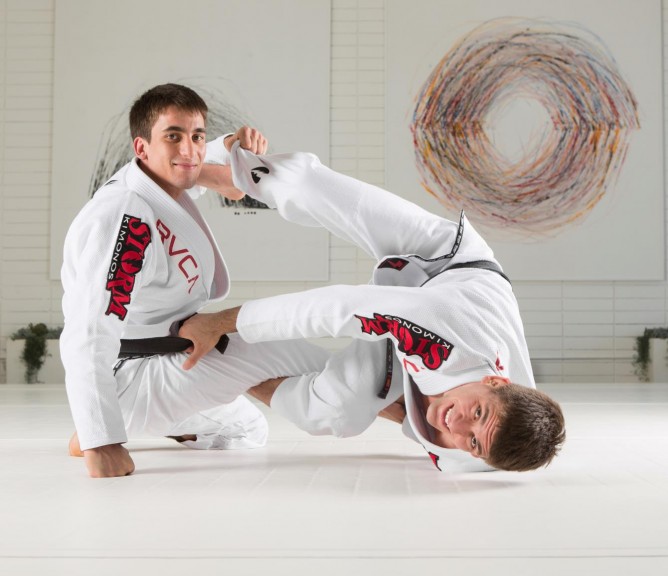Written by Vladimir Popovic, Judo and BJJ black belt, Master in Sports instructor at Gracie Jiu-Jitsu Singapore, master degree in sport science and exercise. Strength and condition coach, specialty – martial arts.
What are motor abilities?
The ability of human body to perform various movements is possible thanks to motor abilities. According to different authors there are few motor abilities (strength, endurance, speed, flexibility, balance, agility, coordination) and each one of them has subdivisions.
On the other hand, motor skills are more concrete movements or movement patterns, such as running, jumping, swimming, skiing, biking, diving… and shouldn’t be confused with motor abilities.
Strength in BJJ
Strength is the ability to carry out work against the resistance. It can be:
1. Isometric (static) strength – Body/body parts are not moving and are working against the outside force in order to control it and/or stop the movement
2. Isotonic (dynamic) strength – Body/body parts are trying to move the objects or outside force using muscles
Also, it can be:
Maximum strength –force (1 -3 RM, or up to 7, 8 sec)
Repetitive strength – (4 – 10 RM, or 9 – 30 sec), related with muscle endurance
Endurance in BJJ
Endurance is the ability to perform specific movement(s) continuously for extended periods without losing efficiency. It can be:
1. Muscular endurance (local endurance), engages more muscle
2. Cardiovascular endurance (complete endurance), engages more heart, blood system, respiratory system
Also, it can be:
Aerobic (no lactic acid)
Aerobic-anaerobic (there is lactic acid, but body is able to remove (neutralize) lactic acid successfully)
Anaerobic (releasing of lactic acid is higher that body’s ability to remove (neutralize) it)
Flexibility in BJJ
Flexibility is the ability to move muscle or joint through a big range of motion. It can be:
1. Active – our own force (muscles) are moving our body parts
2. Passive – outside force is moving our body parts (e.g. partner)
Also, it can be:
1. Static (holding the position, while being in a stretched position)
2. Dynamic (stretch is performed through the movement)
Agility
Agility is ability to quickly change body position or direction of the body. It can be:
1. Planned (proactive) or
2. Unplanned (reactive).
Also, it can be:
1. Single-optional or
2. Multi-optional
Balance
Balance is the ability to stay upright or stay in control of body movement. It can be:
1. Static (maintaining body position without moving)
2. Dynamic (maintaining body position/control through the movement)
Examples in BJJ
Finalizing the triangle choke is a great example of maximum (statis) strength, primarily of leg muscles.

Holding the side control position is a great example of static (isometric) strength, and static muscle endurance.

Grip fighting is a great example of muscle endurance , primarily of forearm and hand muscles.

Maintaining the guard or guard retention position is a great example of passive flexibility, primarily of legs and hips.

Conclusion
This topic is very broad and this is just a small trailer/presentation. There are many more examples. As we can see, physical preparation is important part of BJJ, and together, combined with technical side can give amazing results.

















